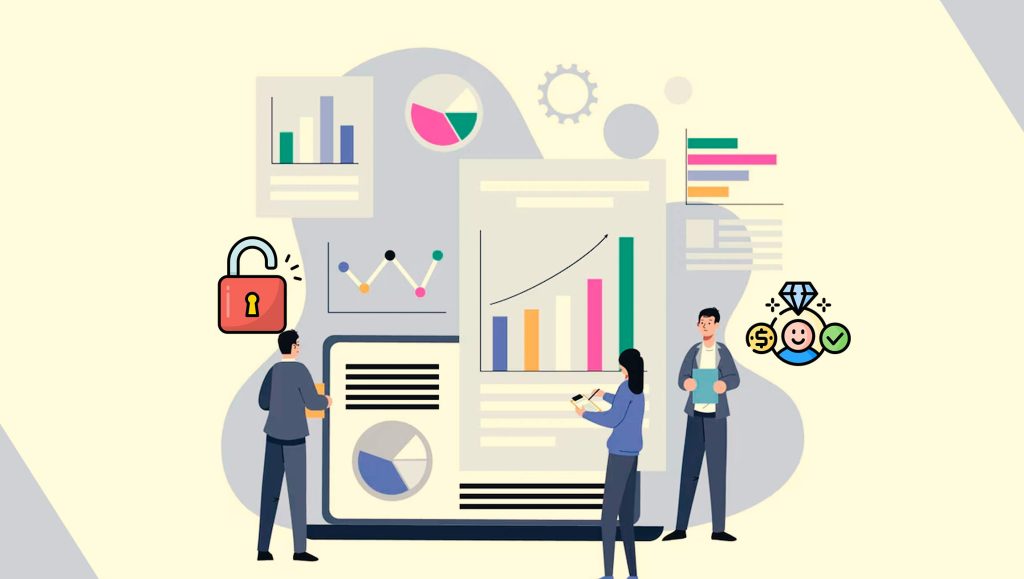Customer lifetime value (CLV) is an important revenue metric, but it is often underestimated by companies. When used correctly, CLV can serve as the biggest growth driver.
Customer lifetime value (CLV) shows you the purchases made by your customer over his or her entire time spent with your company. And to make the most of your customer lifetime value, you can leverage real-time data. Data has become a cornerstone of success for modern businesses, and its profound impact lies in its ability to unlock the true potential of customer lifetime value.
Let us define some key areas and data strategies to extract the most out of CLV.
What is the customer lifetime value?
Customer lifetime value quantifies all the value that a customer brings to your business over the total period of their relationship with your company. It is an important metric that marketing teams calculate to understand and optimise consumer relationships for long-term revenue growth.
A high lifetime value signifies that your marketing efforts are working positively and driving repeat purchases over time.
Formula to calculate CLV:
Average purchase value x purchase frequency per year x average customer lifespan = customer lifetime value
Why customer lifetime value is important for marketers
Customer lifetime value helps you make smarter decisions in customer acquisition and retention. When you calculate the long-term outlook of CLV, you can create a deep understanding of customer profitability. Knowing the lifetime value levels of current customers offers an anchor point for how much effort and budget should be allocated to the new customers brought in.
Top Data Strategies for CLV Success
To unlock the true potential of CLV, it is essential to utilise effective data strategies. Here are some key data strategies to consider:
Effective data capture
It is imperative to capture crucial data points for CLV calculation. It includes purchase history, demographics, customer behaviour, and other support interactions. Additionally, monitoring the quality of the data is also essential. You must ensure the data used to provide CLV insights is accurate and clean. If required, you should go about data cleaning techniques to address the flaws, errors, and inconsistencies in the data.
Technology Enablement
Software tools like CDPs (customer data platforms) unify data from various customer touchpoints to provide you with a unified user profile. You can put CDPs to work so that you can enjoy a unified view of a customer journey and get an accurate CLV for your business. Additionally, there are marketing and analytics tools that streamline data collection and analysis, freeing up your time to focus on strategic decision-making.
By utilising advanced analytics and business intelligence tools, you can uncover hidden patterns and trends in customer behaviour. These tools go a long way in identifying high-value customer segments and predicting CLV.
Strategic Planning with AI and Data Shares
Predictive modelling helps you forecast customer churn, purchase behaviour, and CLV. It enables proactive customer retention strategies and tailored offers. You can also employ AI-powered segmentation to identify distinct customer groups based on purchase patterns, preferences, and CLV. Finally, data science helps you optimise marketing campaigns and enhance customer experiences based on CLV. As a result, you can identify high-value customer touchpoints and allocate resources accordingly.
Read More: SalesTechStar Interview with Alistair Rennie, co-CEO of Totango
Visibility and influence
By fostering a data-driven culture within your organisation, you can ensure that the CLV insights are properly accessible and utilised across all departments. You should create an atmosphere where regular CLV reports are generated and sent to the leaders for an overview. It will help you demonstrate the impact of marketing efforts and secure budget allocation.
Additionally, you can use CLV as a key metric to measure the return on investment of marketing campaigns and allocate all the resources effectively.
Integration and inclusion
The point refers to establishing clear data ownership, data quality standards, and access controls to protect customer privacy and maintain compliance with regulations. It is also important to strike cross-functional collaboration where you break down silos between sales, marketing, customer services, and other departments to share CLV insights and work together on various customer initiatives.
And it is also essential to adhere to ethical practices, ensuring fairness and transparency in data collection and implementation. When you build trust with your customers by protecting their data, they are likely to engage with you more.
Wrapping Up
Understanding and optimising customer lifetime value (CLV) is no longer a luxury but a necessity for business growth. By effectively capturing, analysing, and leveraging customer data, businesses can unlock hidden opportunities, enhance customer experiences, and drive long-term profitability.
By implementing robust data strategies, organisations can create a data-driven culture that empowers decision-makers at every level. Through comprehensive data collection, advanced analytics, and AI-powered insights, businesses can accurately predict customer behaviour, personalise marketing efforts, and build lasting customer relationships.
Ultimately, the successful implementation of these strategies will lead to increased customer loyalty, higher revenue generation, and a competitive advantage in the marketplace. Embracing the power of CLV is not just about maximising short-term gains, but about building a sustainable and thriving business for the future.
Read More: Beyond Sales: Integrating RevTech for Holistic Sales and Revenue Growth





















